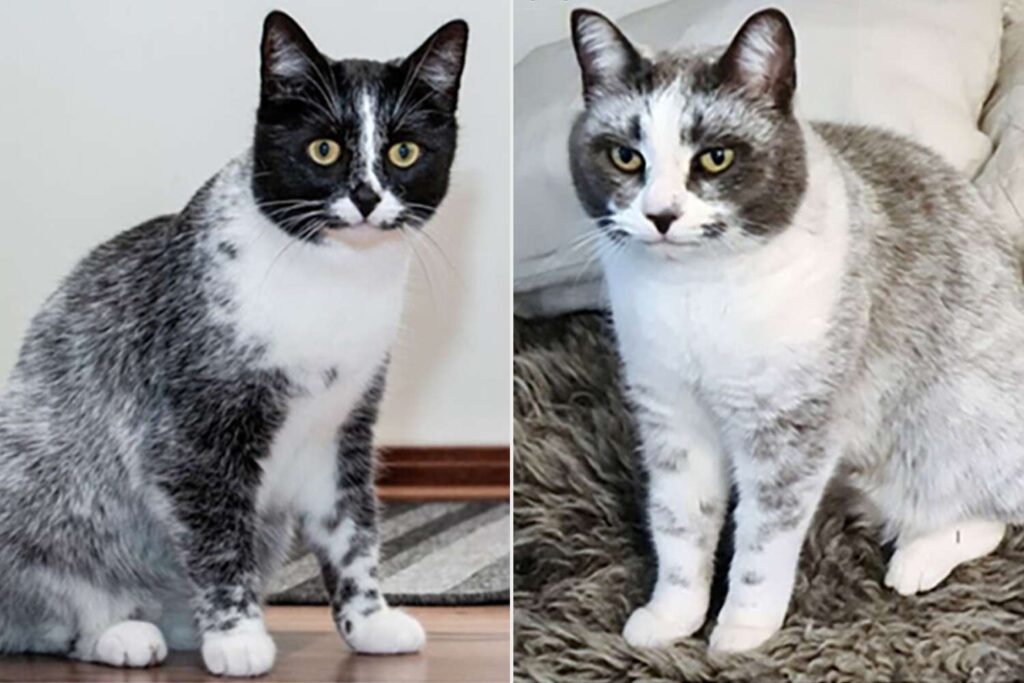Ever heard of salty licorice cats?
No, it’s not a new candy flavor or a quirky dessert.
It’s a fascinating genetic mutation in cats that’s got scientists and cat lovers buzzing.
If you’re a fan of all things feline, you’re in for a treat.
Let’s dive into the world of these unique kitties and uncover what makes them so special.
Table of Contents
- What Are Salty Licorice Cats?
- The Science Behind the Mutation
- How Do Salty Licorice Cats Look?
- Are These Cats Rare?
- Caring for a Salty Licorice Cat
- Why This Matters for Cat Lovers
- FAQs About Salty Licorice Cats
- The Future of Salty Licorice Cats
What Are Salty Licorice Cats?
Salty licorice cats are a rare type of feline with a unique genetic mutation.
This mutation affects their fur color, giving them a distinct, smoky appearance.
The name comes from the resemblance of their coat to salmiak licorice, a popular Scandinavian treat.
It’s not just about looks, though.
This mutation has sparked interest in the scientific community for its implications in genetics.
Imagine a cat with a coat that looks like it’s been dusted with charcoal.
Their fur has a muted, smoky hue, often with a gradient from dark to light.
Some compare it to the look of burnt toast or smudged eyeliner.
It’s subtle but striking.
And it’s not just one breed—this mutation can appear in various cat breeds.
The Science Behind the Mutation
So, what’s going on genetically?
The mutation is linked to a gene called KIT.
This gene plays a role in pigmentation and cell development.
When mutated, it causes the cat’s fur to have a gradient effect, blending dark and light tones.
Think of it like a smoky shadow over their coat.
Scientists are studying this to understand more about how genes influence appearance.
The KIT gene isn’t just about fur color—it’s also involved in other bodily functions.
This makes the mutation even more intriguing.
It’s a reminder of how complex genetics can be.
How Do Salty Licorice Cats Look?
Let’s paint a picture.
Imagine a cat with a coat that looks like it’s been dusted with charcoal.
Their fur has a muted, smoky hue, often with a gradient from dark to light.
Some compare it to the look of burnt toast or smudged eyeliner.
It’s subtle but striking.
The effect can vary from cat to cat.
Some may have a more pronounced gradient, while others might just have a hint of smokiness.
It’s not just one breed—this mutation can appear in various cat breeds.
From domestic shorthairs to long-haired beauties, the salty licorice look can pop up anywhere.
Are These Cats Rare?
Yes, salty licorice cats are extremely rare.
The mutation isn’t common; even when it occurs, it’s not always noticeable.
If you’re lucky enough to spot one, consider it a feline unicorn.
Their rarity makes them a hot topic among cat enthusiasts and breeders.
Some breeders are even trying to replicate the mutation, but it’s not easy.
Genetics is a tricky business, and there’s no guarantee the trait will be passed on.
Caring for a Salty Licorice Cat
Caring for these cats isn’t much different from caring for any other cat.
But here are a few tips to keep in mind:
- Regular Grooming: Their unique coat may require a bit more attention to keep it looking its best.
- Healthy Diet: A balanced diet ensures their fur stays shiny and healthy.
- Vet Check-ups: Regular visits help catch any potential health issues early.
Remember, their uniqueness is skin-deep.
They’re just like any other cat when it comes to love and care.
Why This Matters for Cat Lovers
Salty licorice cats are more than just a pretty face.
They’re a reminder of how diverse and fascinating nature can be.
For cat lovers, they’re a testament to the endless variety within the feline world.
And for scientists, they’re a window into the complex world of genetics.
Studying these cats can help us understand more about how genes work.
It’s not just about cats—it’s about the bigger picture of genetics and biology.
FAQs About Salty Licorice Cats
1. Can I adopt a salty licorice cat?
Adopting one is possible but challenging due to its rarity.
Keep an eye on shelters or breeders specializing in unique feline traits.
2. Is the mutation harmful to the cat?
So far, there’s no evidence that the mutation affects the cat’s health.
They’re just as healthy as any other cat.
3. Can the mutation be passed to offspring?
Yes, if both parents carry the gene, there’s a chance the kittens will inherit the trait.
4. Are salty licorice cats more expensive?
Their rarity can make them pricier, but it depends on the breeder and demand.
5. What breeds can have this mutation?
The mutation isn’t breed-specific.
It can appear in various breeds, from domestic shorthairs to long-haired cats.
6. How can I identify a salty licorice cat?
Look for a smoky, gradient-like fur pattern.
It’s subtle but distinct once you know what to look for.
The Future of Salty Licorice Cats
What does the future hold for these unique felines?
As interest grows, we might see more research into the KIT gene and its effects.
This could lead to a better understanding of genetics in general.
For cat lovers, the future might bring more opportunities to adopt or even breed these cats.
But it’s important to remember that their rarity is part of what makes them special.
Overbreeding could dilute the uniqueness of the mutation.
Final Thoughts
Salty licorice cats are a rare and intriguing phenomenon.
Whether you’re a cat enthusiast or just curious about genetics, they’re worth learning about.
Who knows?
You might just spot one of these smoky-coated beauties someday.
So, keep your eyes peeled.
The world of cats is full of surprises, and salty licorice cats are just the tip of the iceberg.



